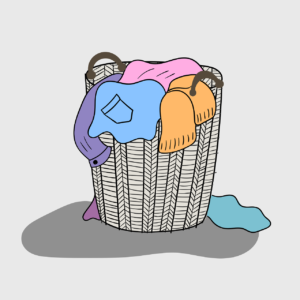Fast Fashion – Between the Seams

Photo courtesy of pixabay.com
March 31, 2023
Fast fashion – “inexpensive clothing produced rapidly by mass-market retailers in response to the latest trends”
While online shopping, it’s not uncommon to stumble across famous fashion brand knock-offs. For example, Kanye West’s signature slides retail at around $200, yet there are replicas for $20 on Amazon. Digging deeper, I found myself exploring the culmination and consequences of fast fashion, and why you should probably stop shopping at Shein.
How did it start?
Before the 20th century, cloth-making had been a meticulous process using hand-made wool, cotton, or leather. Also in these times, the average American purchased around 12 articles of clothing each year (Fashionopolis, Dana Thompson).
The industrial revolution allowed for the production and distribution of clothes to become cheaper, faster, and more competitive. Here began the emergence of clothing chains like Zara, Fashion Nova, and H&M. They adopted the fast fashion business model – taking designer brands and replicating the designs – and began selling clothes at unprecedented rates.
For example, the fashion house Gucci typically hosts only 3 fashion shows a year to showcase its new designs. On an average day, Shein releases 2,000 new items! As a result, Americans now purchase upwards of 50 new articles of clothing (which are arguably worn 3 times or less), and the increase in demand has had a detrimental effect on both the environment and the quality of labor used to satisfy the expanding market.

The ‘fast’ in fast fashion also represents how long the clothes last. “The average US consumer throws away 81.5 lbs of clothes every year. In America alone, an estimated 11.3 million tons of textile waste – equivalent to 85% of all textiles – end up in landfills on a yearly basis” (Earth.org).
But what does all this mean?
First, it means that for the fast fashion business model to be effective, the wage has to be as cheap as the worth of the clothes that they produce. For example, Bangladesh is the second largest exporter of apparel in the world. In 2013, the Rana Plaza factory (a sweatshop in Bangladesh), collapsed killing 1,134 workers. It took almost a month to finish searching for the dead.
The reality is, out of the many factory workers in Bangladesh (around 85% being women), those workers died making about $3 a day. They died supplying the demanding market of our clothing stores (H&M, Zara, GAP), who make sure that they are not legally obligated to change working conditions in these countries.
Secondly, the amount of environmental strain caused by the production of this many clothes is rising. “It Takes 20,000 Litres of Water to Produce One Kilogram of Cotton” (Earth.org) To put that into perspective, the water used to make your t-shirt could be someone else’s drinking water for 2 years, not including washing your clothes as well. In short, the amount of clothes being made is becoming a big waste, with items being thrown away after an average of 7-15 wears.
What does this have to do with me?
This is a question I had to ask myself as well. I don’t necessarily obsess over wearing completely new outfits every week, and I am for sure not someone who throws them away, but I 100% shop at fast-fashion brands. I feel that for this business model to be reduced is to first reduce the demand. End the culture that promotes the ‘must-haves’ of the fashion industry, and push clothing companies to ethically make quality products that take time to curate.
Holding companies accountable for the exploitation they allow is essential, but first, we have to take a look at our clothing habits and if it’s worth the effects that we can’t see.



















